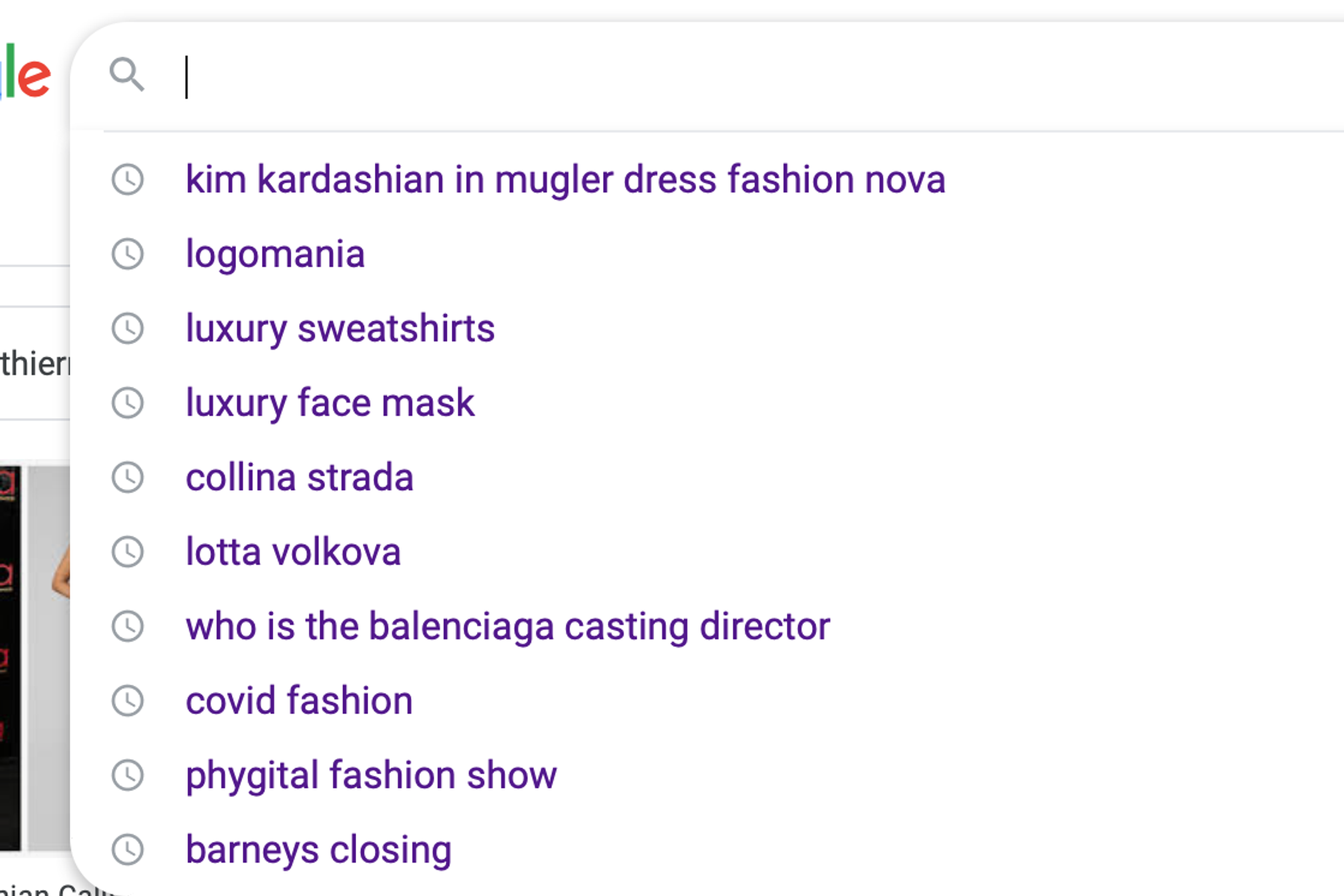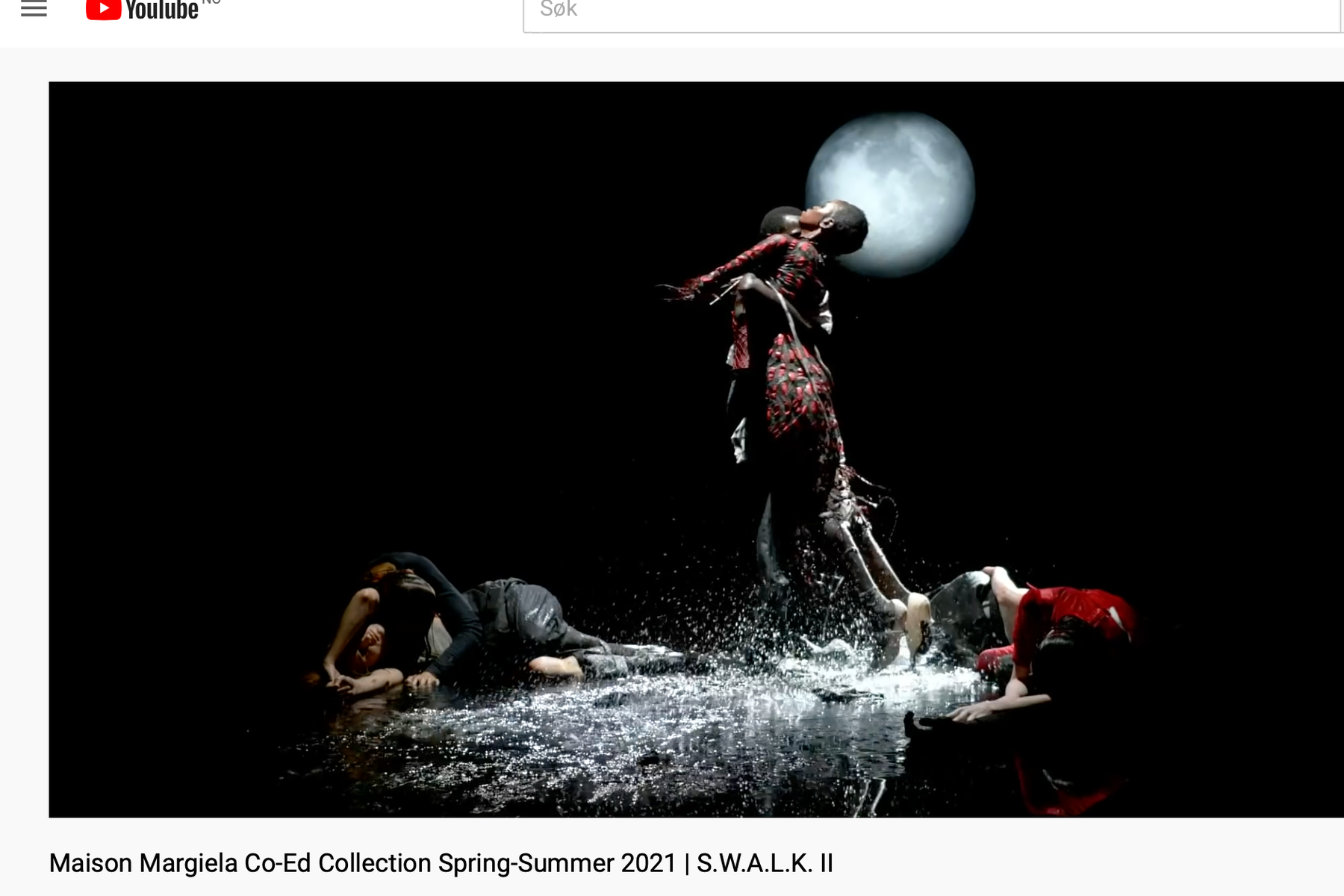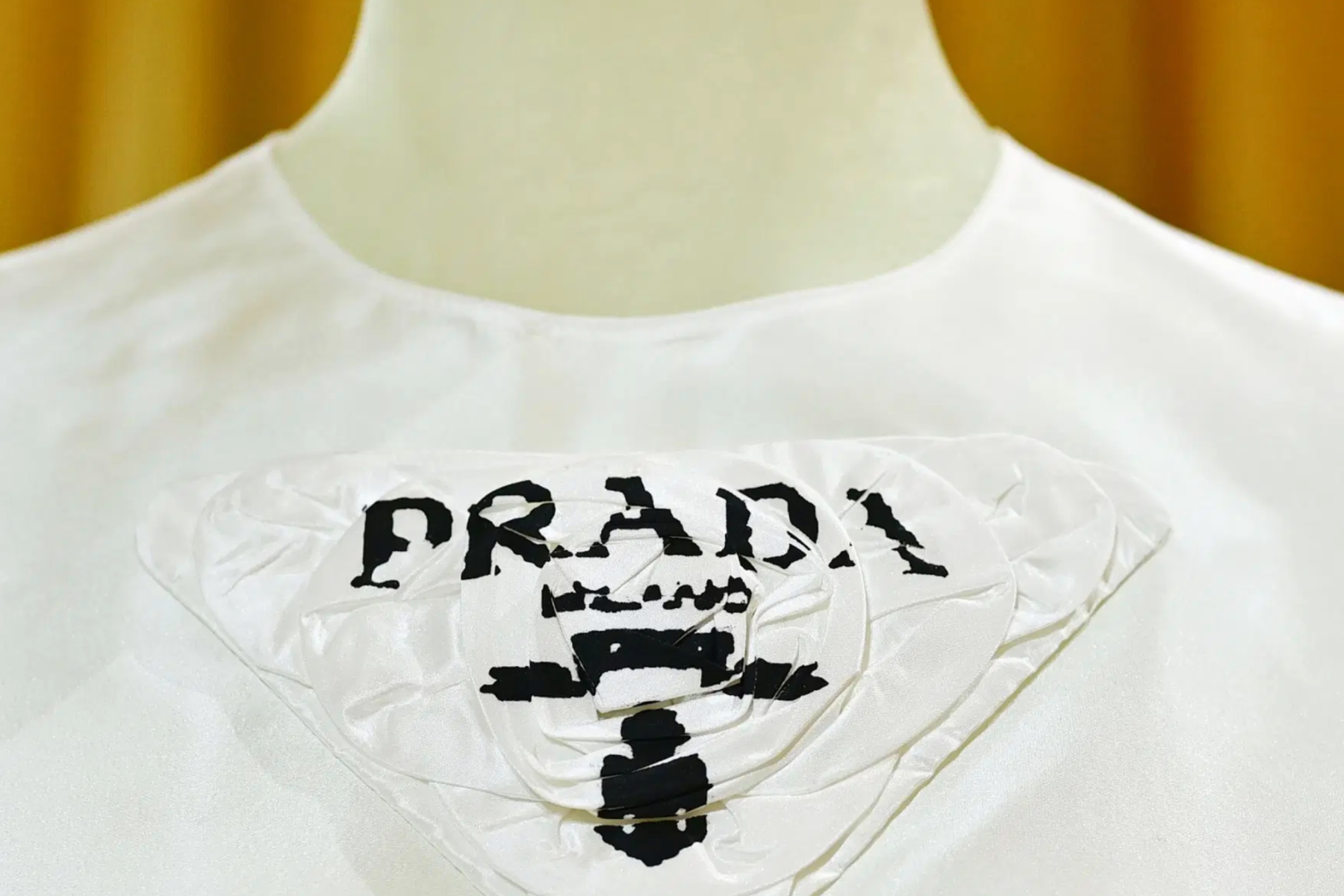The State of Fashion in 2020, by Madeleine Holth & Taylore Scarabelli
As the fashion cycle of 2020 comes to a close journalist, critic and lecturer in fashion Madeleine Holth and Taylore Scarabelli, journalist, critic and a co-founder of Relevant Community embarked on the task of dissecting the state of fashion in 2020, particularly looking at the dismantlement of influencer power, greenwashing, phygital fashion shows, fashion nova culture and brands opting for the junk food of fashion in times of crisis.

Together the two writers reflect on a year in fashion with a critical and analytical discussion touching on consumer behaviour, capitalism in luxury fashion and the annihilation of taste, something that has inevitably changed due to the sociological changes both in global health, politics and activism movements across the world.

Madeleine: Paris Fashion Week ended not too long ago and we’ve seen a lot of changes in society happening in parallel with fashion, i.e. BLM and COVID-19. What changes have you noticed in the fashion industry over the past year?
Taylore: I haven’t noticed that much change, to be honest. We’ve seen a centring of black voices as a reaction to BLM, which is great, but I think systemic changes will take more time. As for COVID, I noticed a lot of brands took the lockdown quite literally this season. I was shocked and disappointed that designers would have such little foresight.
Madeleine: Yeah, it's a low hanging fruit for sure.

Taylore: They’re just building on the streetwearification of luxury. Rich people have been dressing in sweatpants for a long time already, nothing has really changed in terms of what people want. I think it's more of a superficial conceptual change that we’re seeing right now.
Madeleine: I feel like the shift we’ve seen recently is that brands that you normally wouldn’t expect sweatshirts and sweatpants from are starting to push this aesthetic into the public with cliche PR stunts on social media.
Taylore: It's almost an excuse for them because those are the things that sell easily and make them a lot of money.

Madeleine: It’s an entry-level luxury for many people. A logo hoodie and a logo t-shirt won’t set you back as much as a handbag and I get that it's an interesting way to attract the next-gen of buyers, but I’m not seeing how we can evolve from this if brand identities get replaced with printed logos.
Taylore: But it’s the same way luxury brands made money in the past. We’ve just evolved from perfume and cosmetics into like Balenciaga-branded baseball caps and facemasks. Maybe we’ll see more licensing deals as we did in the 70s and 80s. People are buying up defunct brands like Sonia Rykiel and trying to make Barney’s-branded tote bags or whatever, I’m not sure it’s going to work out so well.

Madeleine: I think we should be addressing how the conversation of Instagram and social media has changed in fashion. Does Instagram help fashion anymore? Or is it just a foggy mist of content without purpose?
Taylore: I think there are two ways of looking at it. On one hand, we have this dilution of taste where people just make things that they think will be popular online. At the same time, we’re seeing the rise of more niche markets. Instagram makes it so we see these smaller labels that we wouldn't have found before. Of course, a lot of them are buying into the same trends, but there’s room for experimentation there.
Madeleine: Do you think it's sustainable in terms of money? Are people actually going in and buying these smaller niche brands? Let’s take Dipetsa as an example, she is a designer I discovered on Instagram who specialises wet-looking drapery a la Margiela. There is no way for me to find out what something costs other than to reach out to the designer herself and ask. It makes me feel a little bit uncomfortable because it's a retail experience I’m not used to. Do you think these small brands are making a profit off selling on social media or are we just admiring them through our screen?
Taylore: I think it’s a double-edged sword because you have like,

finding these small brands, contacting them and asking for free samples. It seems great because these celebrity style Instagram accounts tell people what they’re wearing, resulting in promotion for that brand. But in a couple of days, that same look is available on Alibaba. It’s tricky because you get exposure, but you also get ripped off. It’s also ironic because a lot of those small brands are copying each other anyways. It's just another bizarre circle of commerce and hype.
Madeleine: I think especially with Alibaba and Fashion Nova. There was this thing with Kim a while back where she wore this vintage Alaia dress and one day later the copy was available on Fashion Nova. Are people not paying attention to the copying?
Taylore: Why would they care?
Madeleine: Ok, good question, did we ever care?
Taylore: The issue with the Kim Kardashian influencer world is that people were taught that they need a new outfit every day. Ironically, Kim Kardashian complains about being copied when she is the one propagating that culture. I think it's a privilege to care and people are not interested in legacies anymore, they just want to look cool.
Madeleine: Who do you think has influence in 2020?

Taylore: I think influence comes from so many different places and we don’t even realise to what extent we’re being influenced. It’s not a matter of one person showing us something. I think it's about having different points of information. It's the same way we think about marketing, the more you connect the dots the more you’re going to want to buy something. When we look at people in the fashion industry it seems like everyone's a celebrity now, especially stylists. People like Lotta Volkova are walking in shows, and designing collections for big corporations.

Madeleine: I think it’s a really broad term to be a tastemaker in 2020. In the past, you were really good at one thing and now everyone is doing everything. That’s why I think it's important to have a discussion on the state of fashion. It is not one brand who rules them all like Chanel once did. It’s so spread out and it appears as if we’re all drowning at sea looking for something to hold on to. You mentioned Lotta Volkova. We should discuss gatekeepers and who they are in 2020. Is it the casting director at Balenciaga? Who is watching the gates now?

Taylore: I think there’s an issue right now where we don’t really know who the gatekeepers are and there is this literal dying-off of the old gods and old leaders.
As you said before there’s a vacuum that is being filled up with noise and there is no real leadership. Even the role of editors has also become diluted by social media and Instagram. They have to show us things that will perform well on those platforms so there isn’t really a hierarchy of taste anymore. I think people are having a hard time with that.
Madeleine: I think the reason why we don’t know who the gatekeepers are is in part because of an influx of new designers who are making their way pretty fast and pretty seriously in the industry. There’s an internal battle between the old gods and the new. How can a Balenciaga show consisting of 50% sweatshirts happen next to a Dior show filled with tulle and gowns be judged the same way, by the same people? I’m waiting for that conversation to happen where we define what taste is in the eyes of the new gods.

Taylore: I guess that is what is most exciting about fashion right now, that we can think of fashion not as this monolithic industry, but as these separate entities and separate networks that are doing different things.
Madeleine: I wanted to ask you who do you think deserves to buy fashion? Not clothes, but fashion? This is a topic we’ve seen on Twitter especially with the High Fashion Twitter accounts and I’m curious to hear what you think?

Taylore: It depends because, with the industry being saturated with new designers, there’s a broader idea of what fashion is. But I feel like my perspective is different because I didn’t go to fashion school.
Madeleine: I teach fashion theory and I should be able to give you a straight-up answer to what fashion is, but there really isn’t just one answer to that question, at least not anymore. Fashion is clothes with purpose in my opinion, not novelty items for consumption.
Taylore: I think it's interesting to think of fashion as a way to present yourself to the world. Arguably everyone engages with fashion in some way or another. Not to be cliche, but what does fashion mean when we’re all staying at home? What does that mean in this late capitalist society when we're all seeing the same images? A lot of people have precarious work situations and the workplace has changed. There isn’t so much of an expectation for how you present yourself, now it’s a personal choice. People are confused about what it even means to dress yourself.
Madeleine: I truly don’t think people in 2020 have any idea why they put on the clothes they do.
Taylore: I mean ultimately people dress for their tribe and their community and I like that. I love seeing a group of teens and they all look the same.
Madeleine: Do you think we’ll be seeing more tribalism in fashion after lockdown?
Taylore: Considering what is going on in the world I think that we will be dressing more similarly, and that is not necessarily a bad thing. This desire to be unique and different is just marketing and capitalism right? What keeps you excited about fashion? What makes you want to keep working in the industry?
Madeleine: Even though it sounds cliche, it's the hunger for something new that keeps me fixated on fashion. Even if I don’t like anything one season, the next season is always around the corner and that excites me. Like with Balenciaga’s latest hotel slipper heels or

debut collection for Givenchy which featured a tripe-tabi toe that the internet quickly dubbed the Scooby-Doo foot. These fun moments spark a lot of joy.


Taylore: Everything seems to be made for Instagram and to be mimetic now. But sometimes the most mimetic pieces are the most desirable. I hate to admit it, but I would totally wear the Scooby-Doo shoe.
Madeleine: You’ve seen some of the shows this season right? What are your thoughts on the phygital shows?

Taylore: Most of us have been watching shows online for years. If you watch an old John Galliano show on Youtube, you get it right away, so why do we need all these gimmicky things in 2020 to host a digital fashion show? The vision should be able to shine through with just music and visuals. Some of it is good though. Like Collina Strada for instance, her shows used to be so gimmicky with people walking backwards holding hands. I always found it a bit cringe, but then this season she made an experimental video and it really worked for her.

Madeleine: I think some brands knocked it out the park, while others straight-up sucked. Collina Strada was great, but it was a bit long. If I wasn’t experienced in fashion, I would see the video and get it, that’s how good it was. But some lookbooks this season were so atrocious you couldn’t even tell what the garment was in some cases. When I’ve done fashion show reviews in the past, I’ve never mentioned what model is wearing what, because it all comes down to the garment and with these messed up lookbooks it ruined the experience. What I really liked was J.W. Anderson’s invites this season which featured fabric samples from the collection, but then again he can’t do that for everyone who is watching it digitally and that strengthens the hierarchy of fashion. It’s not accessible to everyone, even if it was digital.

Taylore: This goes back to what we talked about earlier about reliance on editors, all of this is marketing for consumers so why aren’t brands releasing their press releases to the public? The people who are fashion nerds in 2020 are on social media coming up with their own hot takes, it's a weird mob mentality but I think brands need to embrace it.
Madeleine: It’s a bit new, but I love to see it. People from the outside giving their honest take without being hired by a magazine to say whatever considering advertising money.
I wanted to touch upon sustainability because you can't talk about the state of fashion in 2020 without talking about sustainability. How many brands out there do you think is actually greenwashing?
Taylore: Like, everyone. Even with the latest Balenciaga show, they were like “3% of the collection is made from either sustainable material or recycled material” and I’m like, what does that even mean?

Madeleine: Do you think people will change though and do investigating on their own to find true sustainability or do people just not care?
Taylore: People just want to know that something is wrong and then they feel alleviated from their guilt. They read about how capitalism is bad and then they go shopping at Sephora. It’s the same with sustainability — no one seems to be willing to stop buying shit. I think we need a better understanding of how the system exploits both humans and the earth in order to inspire change.
Madeleine: I was thinking we can do a little summary and see if we can land on a conclusion of the state of fashion 2020. First and foremost, the biggest change is losing the front row, losing the physical aspect of fashion and seeing the lack of creativity you actually have within a fashion house when it comes to producing an exciting lookbook or video. For me, I’m seeing a lot of chefs and even more mess. Brands are taking the easy way out, opting for quick and easy-sell items in exchange for a quick buck. I feel like Miuccia and Raf’s collection exemplifies the state of fashion in a way, a massive logo on your chest, for everyone to see.

Taylore: I have a friend who bought this Prada nametag and wore it with a Prada bucket hat and I’m like, this is horrifying. I think what we’re seeing now is this splitting of culture, on one hand, there’s logomania as a representation of the mainstream and on the other, there are these smaller, niche brands. It’s like Kanye with Yeezy and The Gap. He wants to create a uniform for everyone — in some ways, you can see how this already exists. Everyone has Nikes, graphic hoodies, etc. On the flip side, there’s another small network of designers who are innovating in a more meaningful way...

Madeleine: So in a way, there will be a hierarchy, a majority right and a divided left.
Taylore: Exactly. I also think mission-driven consumption is becoming more popular. Whether that’s buying from black-owned businesses or sustainable brands. Do you think digital clothes will ever be a thing?
Madeleine: I think people are still hungry for the tangible and the feeling of owning something physically, right now, I believe we are hungry for the junk food of fashion.







